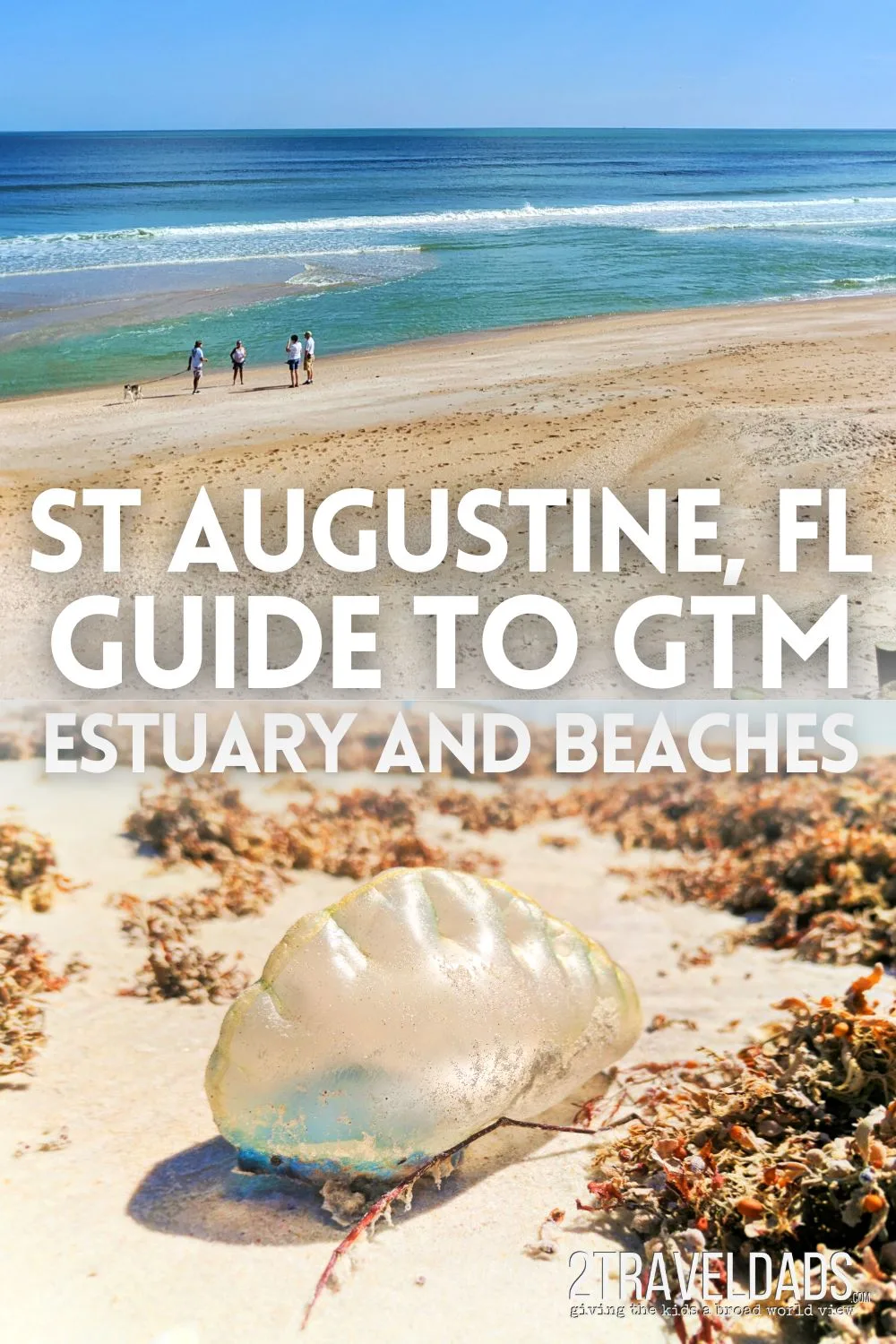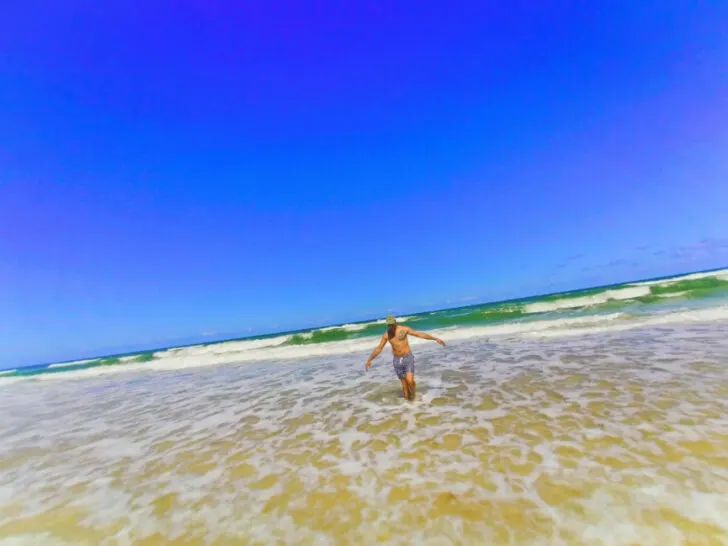I love all of the nature surrounding us here in St Augustine. The GTM Research Reserve is one of our favorite places to enjoy our local wildlife and have some, surprisingly, unusual experiences. The GTM is our go-to for beaches, for wildlife education, shark tooth hunting and more. Keep reading to see what is so special and make plans to add it to your time in St Augustine.
Whether you’re visiting St Augustine and staying at The Local for a week, or if you’re just passing through on a North Florida road trip, plan to at least stop at one of the beautiful beaches here at the GTM, and the visitor center if you have time. We love it all, and you will too.
If you have any questions about the GTM Research Reserve, where to experience other cool Florida nature, or anything else St Augustine related, please leave a comment or send us a note. We love helping people explore the area!

What is the GTM Research Reserve?
The GTM Research Reserve is a protected area that spans over 73,000 acres of coastal and estuarine habitats in northeast Florida, USA. It is located here in St. Augustine, specifically in Ponte Vedra Beach, on the north side of St Augustine Bay. The reserve includes the Guana River Marsh Aquatic Preserve, the Guana Tolomato Matanzas National Estuarine Research Reserve, and the surrounding uplands (slightly elevated areas).
The GTM Research Reserve offers visitors the opportunity to explore and learn about the diverse natural habitats of coastal Florida. You’ll find dunes, beaches, Guana Lake, the Intracoastal Waterway and even nature trails through the hardwood hammock. This is one of our favorite places to take visitors when they’re in town, and it’s our regular haunt for shark tooth hunting.
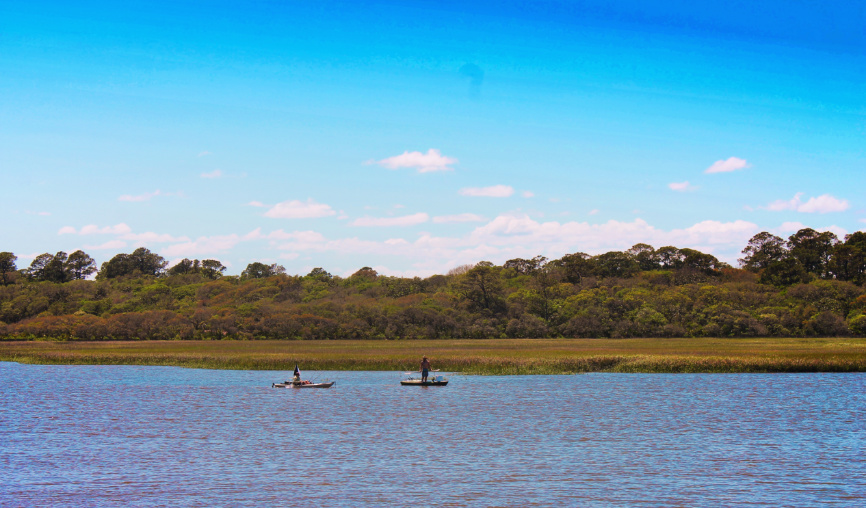
Visiting the GTM Research Reserve
The visitor center at the GTM Research Reserve is open seven days a week from 9 a.m. to 4 p.m., except for Thanksgiving, Christmas Day, and New Year’s Day. The center features exhibits, interactive displays, and educational programs that provide information about the reserve’s ecosystems, research efforts, and conservation initiatives. And our kids LOVE the amazing marine life replicas, both hanging from the ceiling and in exhibits all around.
The GTM Reserve also hosts public events throughout the year, such as guided nature walks, beach cleanups, and educational programs for children and families. These events are typically advertised on the reserve’s website and social media channels, and are often free of charge or have a nominal fee.
The GTM Research Reserve at Ponte Vedra is a great place for visitors who want to learn about and explore nature in and around St Augustine. And you’ll even see baby alligators!
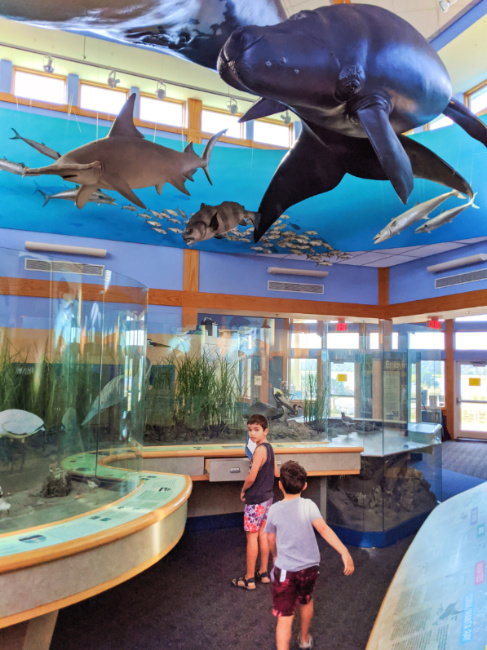
Where is the GTM Research Reserve
If you’re in St Augustine and you head north past the Castillo de San Marcos National Monument and then past the Fountain of Youth Archaeological Park, you’ll come to the Vilano Bridge, which gives a beautiful view of our charming city. Vilano is a St Augustine neighborhood that’s quiet, has its own grocery store and restaurants, and is full of vacation rentals and actual residential areas.
Cross the bridge and take a left to continue on Florida Highway A1A and in about 10 minutes you’ll be to the start of the GTM Research Reserve. There are four different access points, starting with the Visitor Center and South Beach parking, so if it seems like a busy day, continue onto the next access point.
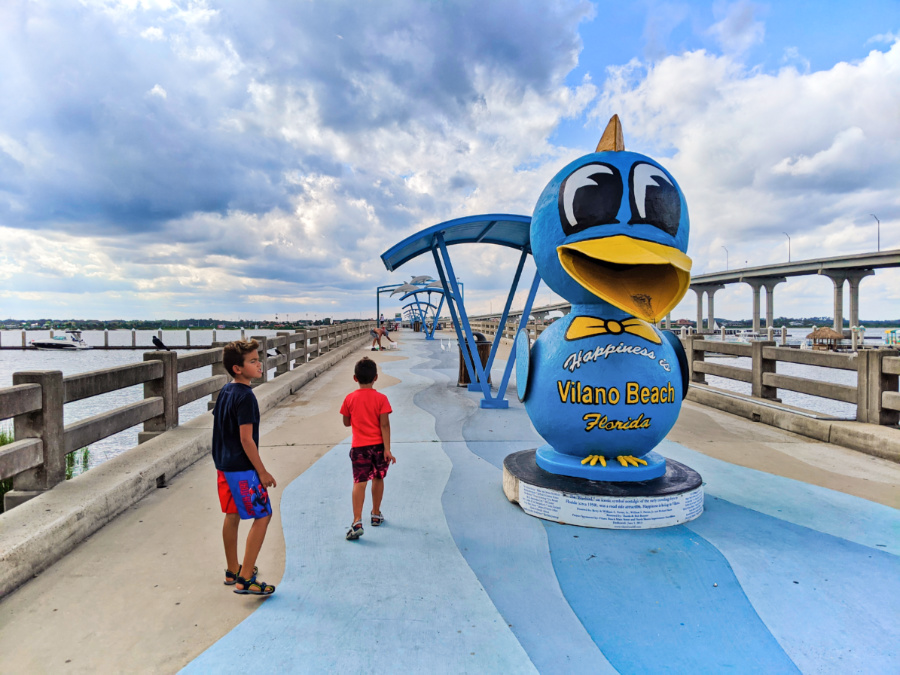
Beach Access at the GTM – South, Middle and North Beaches
The most frequent question we get here, is about beach access in St Augustine. For visitors who want to access the beach, there is a parking area available at the Guana South Beach lot, Middle Beach (my favorite) and North Beach, which are all open from 8 a.m. to sunset. Visitors must pay a small fee to park ($2 USD) and are encouraged to follow the posted rules and regulations to protect the fragile dunes and wildlife habitats.
Each of the beach access points has a crosswalk with signal lights to get across A1A to the beach side of the highway, and then a boardwalk to safely cross the dunes without disturbing the. You’ll find a great observation platform for bird and whale watching at the South and North Beach access points.
Note: if you stop into the GTM education center, they’ll give you the stuff for doing a beach cleanup and to actually document the types of things you find. It’s a great way to have fun and give back.
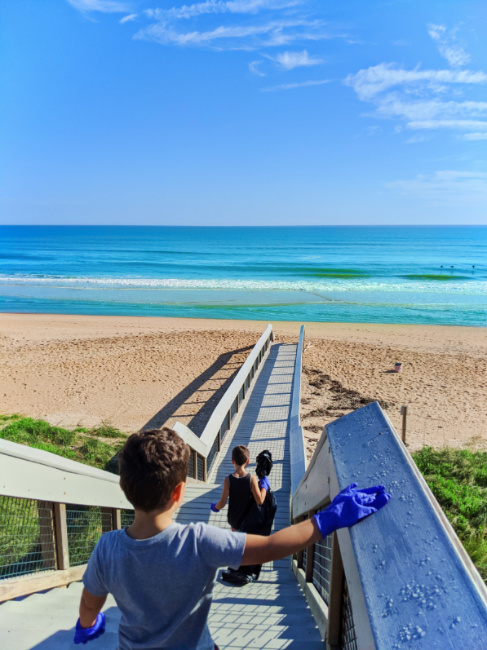
Wildlife at the GTM Research Reserve
The GTM Research Reserve is home to a diverse range of wildlife, including many species of birds, mammals, reptiles, and marine life. While the average visit means a lot of birds, we often see dolphin and even rays jumping in the distance from time to time.
Here are some examples of the types of wildlife that can be seen at the GTM Research Reserve:
- Birds: The reserve is a popular destination for birdwatchers, with over 300 species of birds recorded in the area. Some of the birds commonly seen at the reserve include ospreys, eagles, herons, egrets, ibises, and wood storks. It’s almost as good as birdwatching in the Florida Keys.
- Mammals: Visitors may also spot some of the reserve’s resident mammals, such as white-tailed deer, raccoons, bobcats, and river otters. I’ve never seen a bobcat here, but have seen lots of racoons!
- Reptiles: The reserve is home to a variety of reptiles, including American alligators, gopher tortoises, Eastern diamondback rattlesnakes, and a variety of lizards and snakes (this is one reason to stay out of the dunes!)
- Marine Life: The GTM Research Reserve also includes estuarine habitats and tidal creeks, where visitors can see a range of marine life such as dolphins, manatees, sea turtles, crabs, and fish
The GTM Research Reserve offers visitors a unique opportunity to observe and learn about the diverse wildlife of northeast Florida in its natural habitat. Visitors are encouraged to respect the wildlife and their habitats by following the reserve’s guidelines and regulations, including distancing themselves from wildlife.
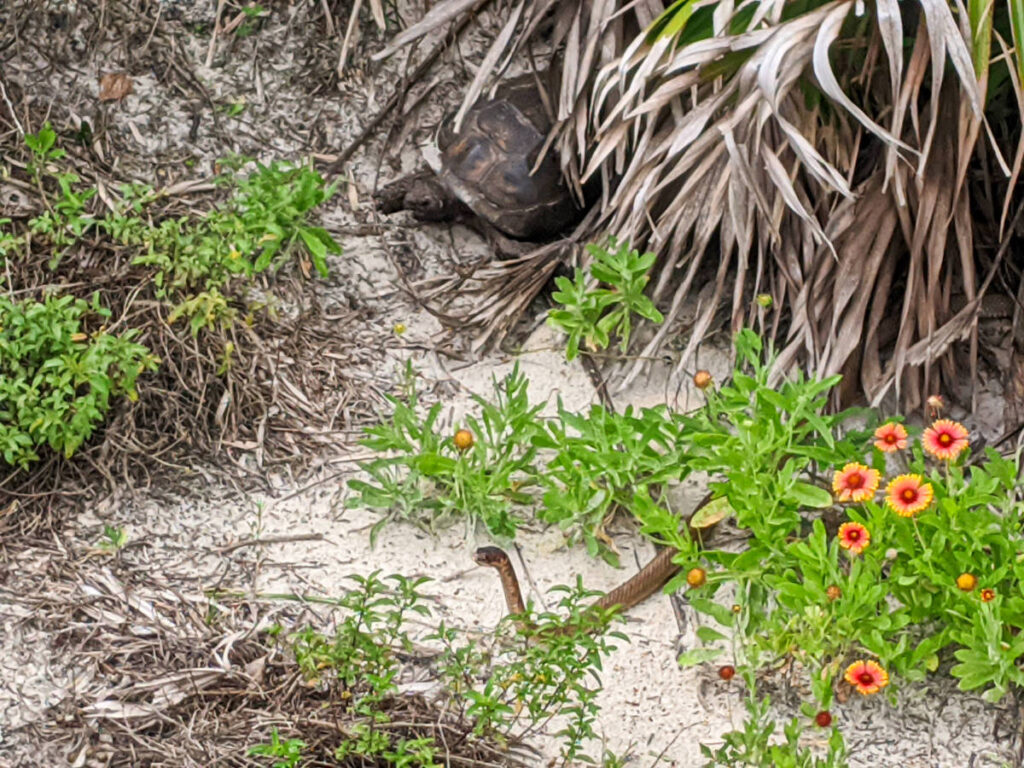
Hiking at the GTM South Beach Hammock
I’m using the term “hiking” very loosely because this is Florida and our hikes are just gentle walks. At the GTM Research Reserve South Beach parking area, there is actually a wonderful trail that leads you through the hardwood hammock (forest). Here you’ll trek through vines, gnarly trees, palms and flowers. It’s a loop and takes no more than 15 minutes to complete. It’s fully shaded and is interesting any time of year.
On the trail, watch for wildlife and birds, and it’s a very well preserved hammock area. Stay on the path, as there really are a lot of critters all around. Another thing to check out along the trail is the old helicopter crash. It’s random, but it’s an excellent example of how Florida weather decays all things over time. Speaking of decay, if you find dead animals in the forest, don’t worry, nature will take care of them over time.
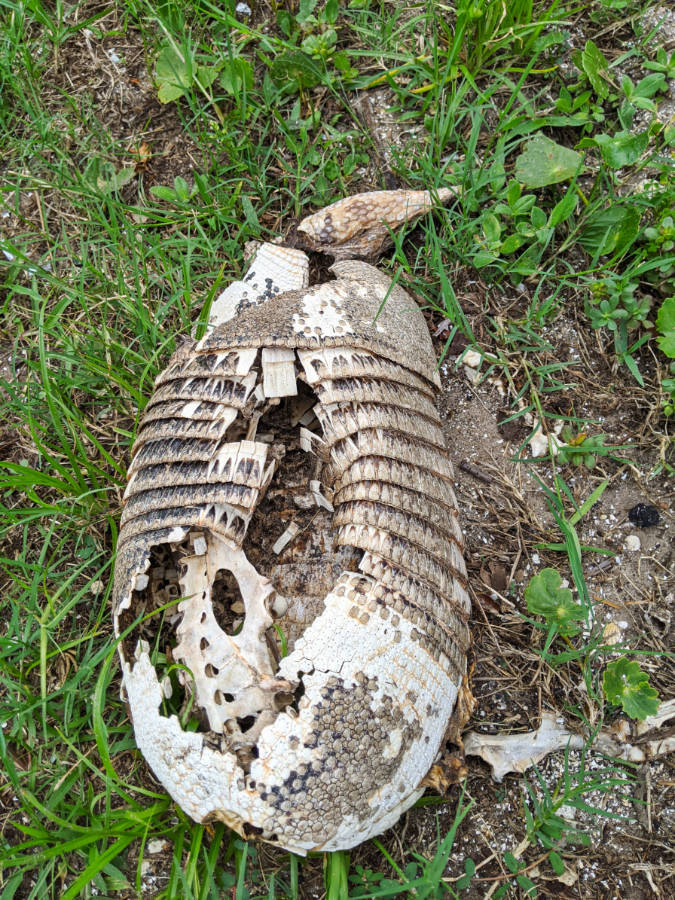
Bioluminescence at the GTM Research Reserve
Seriously, the GTM Research Reserve is such a special place.
The GTM Research Reserve is home to several species of bioluminescent organisms, which are capable of producing light through a chemical reaction within their bodies. Here are some examples of the bioluminescent life that can be observed at the reserve:
- Dinoflagellates: The most well-known bioluminescent organisms at the reserve are dinoflagellates, which are tiny planktonic organisms that live in the water. When disturbed, dinoflagellates emit a blue-green light that creates a mesmerizing glow in the water. Visitors can observe dinoflagellates by kayaking or canoeing in the estuarine habitats of the reserve at night.
- Comb jellies: Comb jellies are gelatinous creatures that also produce a blue-green light. They are found in the estuarine habitats of the reserve and can be seen swimming near the water’s surface at night.
- Fireflies: While not technically bioluminescent, fireflies are another insect that produces light through a chemical reaction. They can be seen in the reserve’s forests and fields during the summer months. If you’re here in peak firefly season and head to the west side of Guana Lake you’ll see them. It’s not quite like Congaree National Park or Columbia SC, but pretty cool
Overall, the GTM Research Reserve offers visitors the opportunity to witness the stunning natural phenomenon of bioluminescence in a variety of forms.

Shark Tooth Hunting at the GTM Research Reserve
Shark tooth hunting is a popular activity at the GTM Research Reserve. The reserve is located on the east coast of Florida, which is known as the “Shark Tooth Capital of the World” due to its abundance of fossilized shark teeth.
Visitors to the reserve can search for shark teeth on the beach and in the shallow waters of the ocean. The best time to hunt for shark teeth is during low tide when the water recedes and exposes the sandy bottom where teeth can be found.
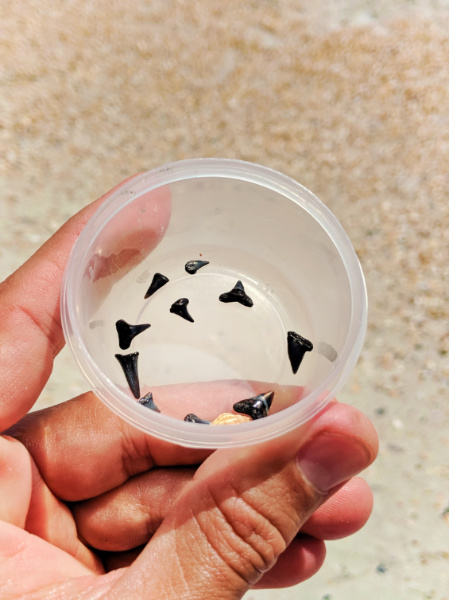
It’s important to note that the GTM Research Reserve is a protected area, and visitors are not allowed to dig or remove any fossils or artifacts from the reserve without a permit. However, visitors are allowed to collect loose, surface finds such as shark teeth, as long as they do not disturb the beach or surrounding habitats.
I have to say, shark tooth hunting is a fun and popular activity at the GTM Research Reserve that I never get tired of. Visitors can search for shark teeth on the beach during low tide or high tide, just pay attention to sneaker waves.
Fun fact: our family actually got to be on Samantha Brown’s Places to Love on PBS for the episode about St Augustine. We shared all about how to find shark teeth and why the GTM is such a special place.
Watch the Samantha Brown St Augustine episode here!
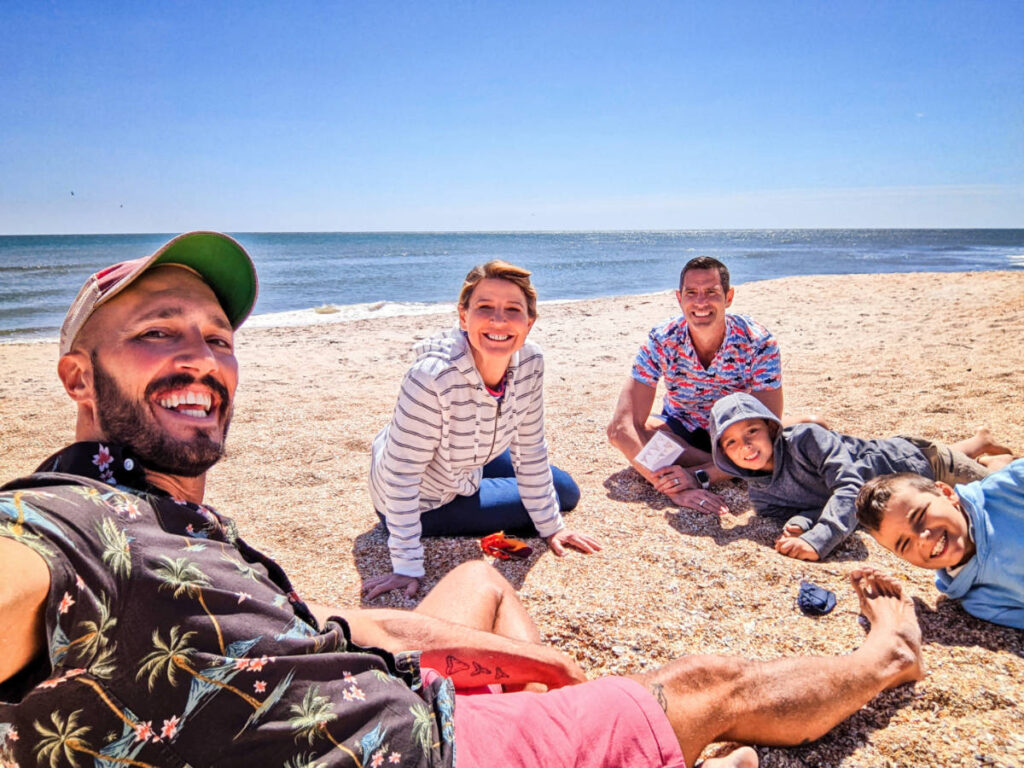
Kayaking at the GTM Research Reserve
The GTM Research Reserve offers several opportunities for kayaking and canoeing in the estuarine habitats of the Guana River and Tolomato River. Here are some options for kayaking at the reserve:
- Guana Lake: The reserve’s east side provides access to Guana Lake, an intracoastal lake that is ideal for kayaking and canoeing. The lake is surrounded by marshes and forests, and visitors can enjoy scenic views and wildlife sightings (sometimes alligators cross the lake to the GTM dune side…)
- Guana River: The reserve’s west side provides access to the Guana River, which flows into the Atlantic Ocean from the south side of the Guana Dam. Visitors can kayak or canoe along the river and explore the surrounding estuarine habitats, which are home to a variety of marine life such as crabs, fish, and birds.
- Tolomato River: The Tolomato River is located to the north of the reserve and offers another option for kayaking and canoeing. Visitors can launch from nearby parks or boat ramps and paddle along the river, which is surrounded by scenic landscapes and historic sites.
It’s important to note that kayaking and canoeing in the estuarine habitats of the GTM Research Reserve require a permit, which can be obtained from the reserve’s visitor center or online. Additionally, visitors should follow the reserve’s guidelines for responsible boating, including wearing a personal flotation device and respecting wildlife and their habitats.

Kayaking with Guana Outpost and GeoTrippin
Guana Outpost does kayak, canoe, and SUP rentals on the Guana River / Lake. They have a location at the Guana Dam (Guana Outpot South) and near Nocatee at North Guana Outpost (NGO). They actually have a full shop at the NGO location.
Guana Outpost has quite a few tour offering as well. Want to go for a moonlight paddle? Yes! Want to see bioluminescence? Yes! Want a naturalist to guide you through the Intracoastal to learn about and observe wildlife? Yes!
GeoTrippin is another tour guide service that operated on the Guana River. From moon jellies and bioluminescence to eco-tours and even paddling lessons, GeoTrippin has it all!

Is River to Sea Preserve a Part of the GTM?
The River to Sea Preserve is not a part of the GTM Research Reserve. It is a separate protected area that is managed by the Flagler County government in partnership with the Florida Department of Environmental Protection. You can paddle here also and have a very similar experience to paddling at the GTM Research Reserve, but with the bonus of grass islands and creek mazes.
The River to Sea Preserve is located just south of the GTM Research Reserve and consists of 73 acres of undeveloped land that spans from the Atlantic Ocean to the Intracoastal Waterway. The preserve includes a variety of habitats, including dunes, salt marshes, and mangrove swamps, and provides habitat for a wide range of wildlife.
While the River to Sea Preserve is not part of the GTM Research Reserve, it is located in close proximity and offers similar opportunities for outdoor recreation and nature viewing. Visitors can enjoy hiking, birdwatching, fishing, and beach combing in the preserve, as well as exploring the estuarine habitats along the Intracoastal Waterway.
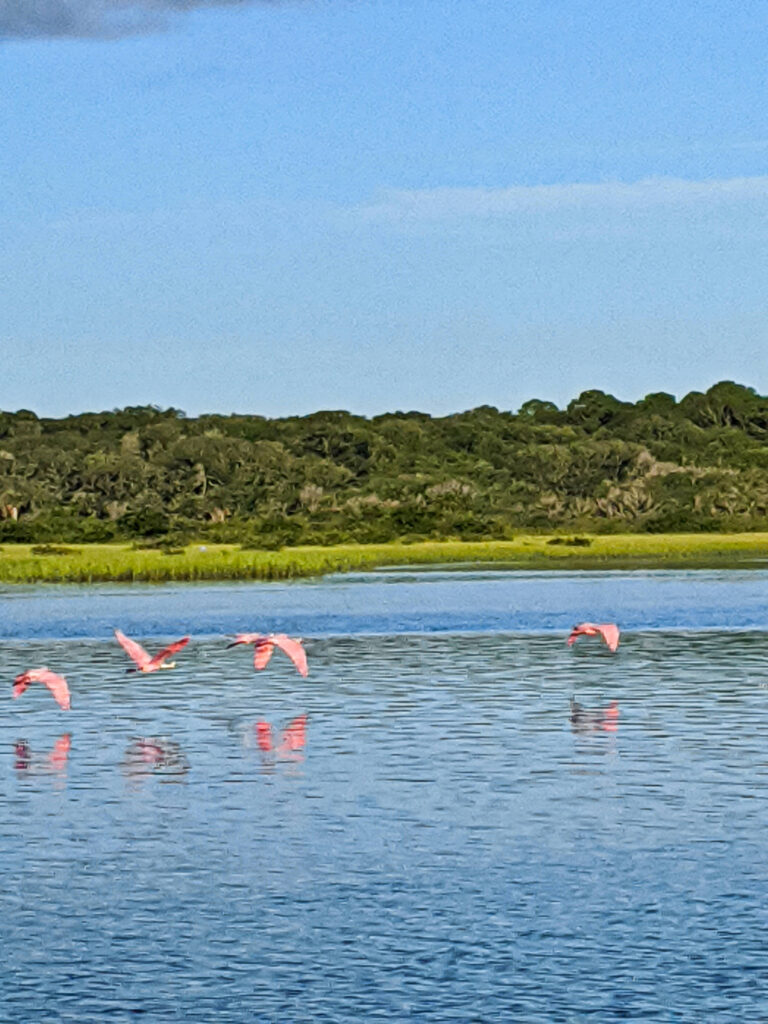
I hope you’re excited to visit the GTM Research Reserve and have a really wonderful, unusual experience here in St Augustine. If you have any questions about the GTM Research Reserve, where to experience other cool Florida nature, or anything else St Augustine relates, please leave a comment or send us a note. We love helping people explore the area!
